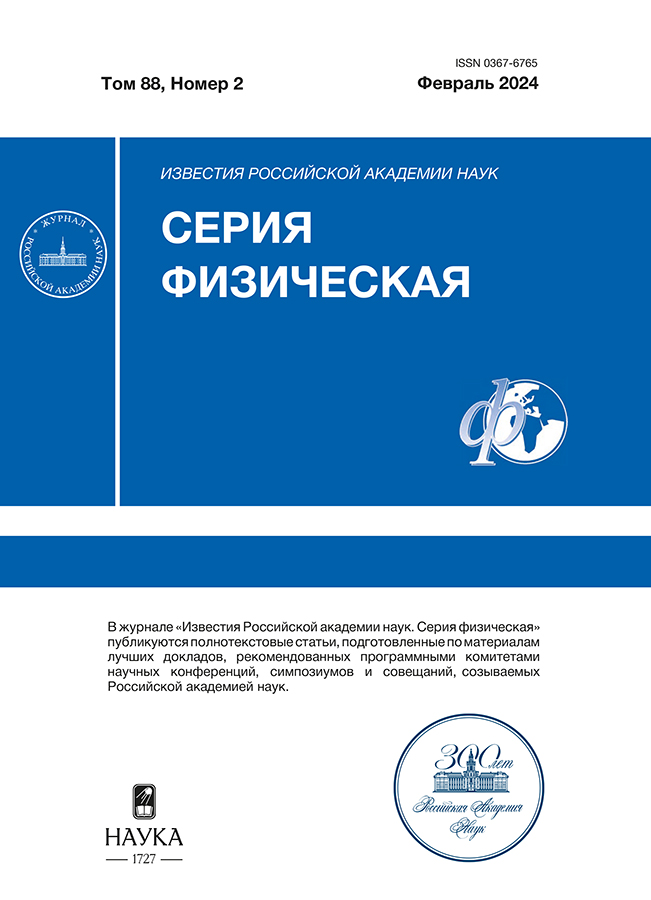Registration of the auroral near-UV emission by the orbital detector TUS
- Authors: Klimov P.A.1, Sigaeva K.F.1, Kalegaev V.V.1
-
Affiliations:
- Lomonosov Moscow State University
- Issue: Vol 88, No 2 (2024)
- Pages: 327-330
- Section: Physics of Cosmic Rays
- URL: https://jdigitaldiagnostics.com/0367-6765/article/view/654773
- DOI: https://doi.org/10.31857/S0367676524020291
- EDN: https://elibrary.ru/RPSQVJ
- ID: 654773
Cite item
Abstract
The TUS detector is a highly sensitive orbital telescope. Due to the polar orbit of the spacecraft, the detector made observations of the UV luminosity of the atmosphere above the aurora oval. Events with intensity variations characteristic of pulsating auroras have been registered. The events are located along the equatorial boundary of the auroral oval and occur during long-term geomagnetic disturbances. Comparison with data from charged particle detectors shows the presence of an increased flux of precipitating high-energy electrons (with energies above 100 keV) simultaneously with UV pulsations.
Full Text
About the authors
P. A. Klimov
Lomonosov Moscow State University
Author for correspondence.
Email: pavel.klimov@gmail.com
Russian Federation, Moscow
K. F. Sigaeva
Lomonosov Moscow State University
Email: pavel.klimov@gmail.com
Russian Federation, Moscow
V. V. Kalegaev
Lomonosov Moscow State University
Email: pavel.klimov@gmail.com
Russian Federation, Moscow
References
- Klimov P.A., Panasyuk M.I., Khrenov B.A. et al. // Space Sci. Rev. 2017. V. 212. No. 3–4. P. 1687.
- Климов П.А., Зотов М.Ю., Чирская Н.П. и др. // Изв. РАН. Сер. физ. 2017. Т. 81. № 4. С. 442; Klimov P.A., Zotov M.Yu., Chirskaya N.P. et al. // Bull. Russ. Acad. Sci. Phys. 2017. V. 81. No. 4. P. 407.
- Khrenov B.A., Garipov G.K., Kaznacheeva M.A. et al. // JCAP. 2020. V. 2020. No. 3. Art. No. 033.
- Klimov P.A., Khrenov B.A., Kaznacheeva M.A. et al. // Remote Sensing. 2019. V. 11. No. 20. P. 2449.
- Казначеева М.А., Климов П.А., Хренов В.А. // Изв. РАН. Сер. физ. 2019. Т. 83. № . 8. С. 1125; Kaznacheeva M.A., Klimov P.A., Khrenov B.A. // Bull. Russ. Acad. Sci. Phys. 2019. V. 83. No. 8. P. 1024.
- Sadovnichy V.A., Panasyuk M.I., Yashin I.V. et al. // Solar Syst. Res. 2011. V. 45. No. 1. P. 3.
- Panasyuk M.I., Svertilov S.I., Bogomolov V.V. //Adv. Space Res. 2016. V. 57. No. 3. P. 835.
- Klimov P., Garipov G., Khrenov B. et al. // J. Appl. Meteorol. Climatol. 2017. V. 56. No. 8. P. 2189.
- Klimov P.A., Sigaeva K.F. // J. Atmos. Sol. – Terr. Phys. 2021. V. 220. Art. No. 105672.
- Yamamoto T. // JGR. Space Phys. 1988. V. 93. P. 897.
- Duncan C., Creutzberg F., Gattinger R. et al. // Canad. J. Phys. 2011. V. 59. P. 1063.
- Tsurutani B.T., Gonzalez W.D. // Planet. Space Sci. 1987. V. 35. No. 4. P. 405.
- Hajra R., Tsurutani B.T., Echer E. et al. // Geophys. Res. Lett. 2014. V. 41. No. 6. P. 1876.
- Hajra R., Tsurutani B.T., Echer E. et al. // Astrophys. J. 2015. V. 799. No. 1. P. 39.
Supplementary files













